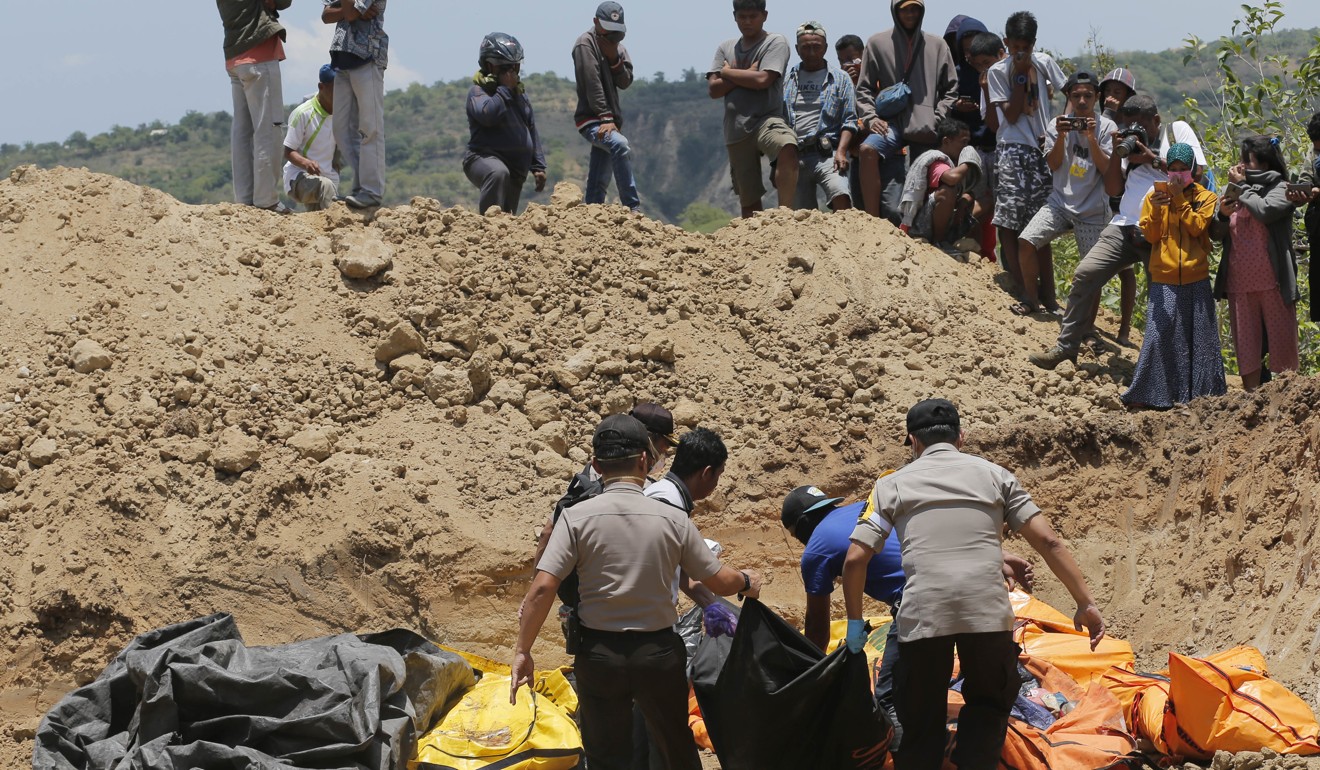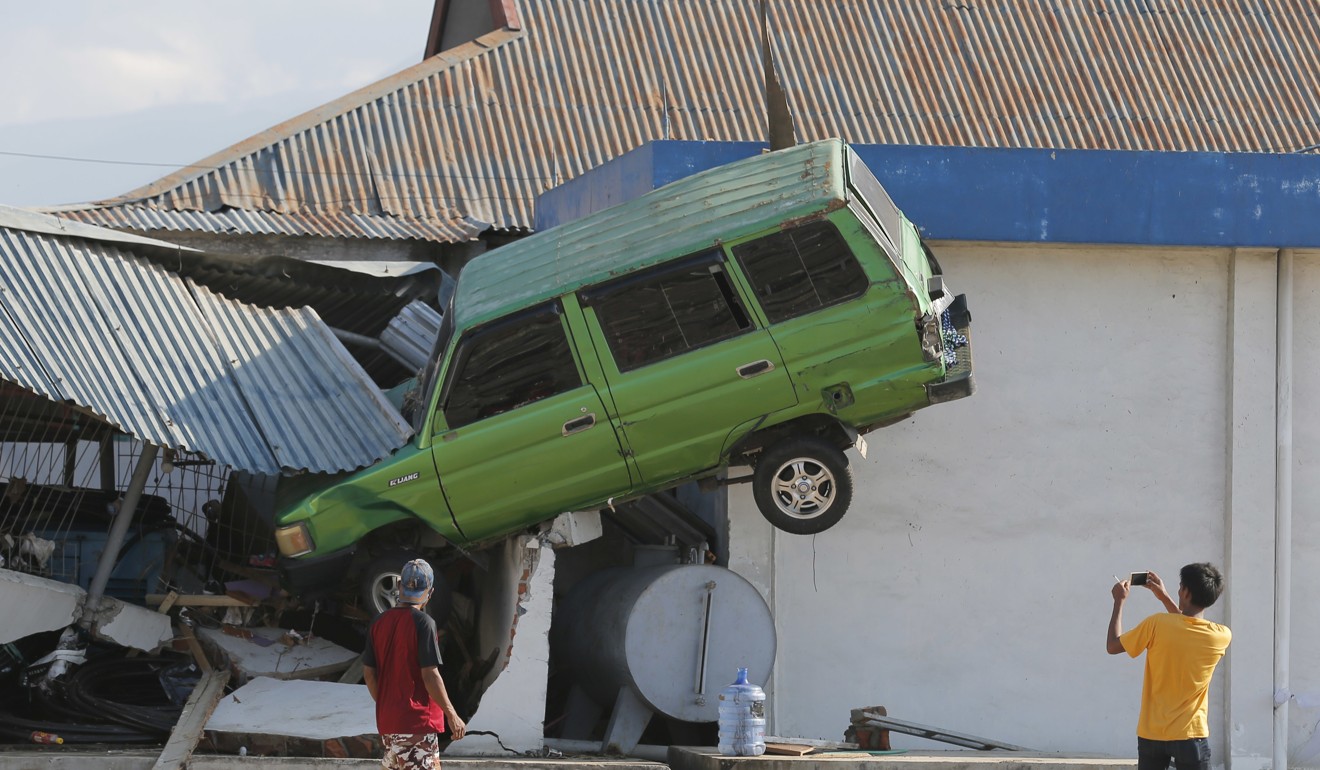
How one Indonesian rescuer found his own family locked in final dying embrace after Palu quake and tsunami
Friday’s 7.5-magnitude quake killed more than 840 people and destroyed thousands of homes, triggering a humanitarian crisis with survivors now in desperate need of food, water and fuel
For two days, Edi Setiwan helped pull the dead and the living out of a sea of mud and debris, all of them victims of one of Indonesia’s deadliest earthquakes in years. And then, half-buried in the brown sludge, he saw two motionless bodies that broke his heart.
“I could see my father still embracing my sister,” Setiwan said, recounting the devastating moment he found the pair entombed in mud near their home in the city of Palu. “I just cried. I was able to save other people, but I was unable to save my own family.”
Two more earthquakes rock Indonesian island of Sumba
Friday’s 7.5-magnitude quake killed more than 840 people and destroyed thousands of homes, triggering a humanitarian crisis with survivors now in desperate need of food, water and fuel.
Most of the casualties were caused by the quake itself and a deadly tsunami that slammed into the coastline around Palu. But hundreds of others were buried alive by a phenomenon called liquefaction, in which loose soil shaken by a quake gives way and collapses.
Disaster agency spokesman Sutopo Purwo Nugroho said Palu’s Petobo neighbourhood, where Setiwan lived, was especially hard-hit.
I could see my father still embracing my sister … I was able to save other people, but I was unable to save my own family
“There are still hundreds of victims buried in mud [in the area],” he said.
On Monday, newly arrived rescue teams were confronting the behemoth task of trying to dig them out.
Palu, a city of 380,000 on the western coast of central Indonesia’s Sulawesi island, stood in ruins. Toppled cellphone towers have cut off communications, while downed power lines leave the city in darkness after the sun sets.
While thousands of desperate people swarmed the airport tarmac trying to escape on board a military aircraft that arrived with aid, burials began in a freshly dug mass grave.
When the massive quake struck on Friday, Setiwan said he was cleaning debris from another strong tremor that had cracked the walls of his home just hours earlier but left it standing.
Indonesia open to overseas aid after earthquakes, tsunami
As the 32-year-old rushed outside, “the ground I stepped on cracked … water and mud came out, more and more from all directions”.
His neighbourhood seemed to be sinking. His wife and year-old daughter were fine, but other family members, friends and neighbours were missing.

He tried to reach his parents’ home, about 300 metres away, but the sea of mud that engulfed the area made it too hard to reach. With other villagers, he turned to saving whoever he could.
“I took a two-year-old [child] on my head, a three-year-old on my back, and held a five-year-old while struggling to swim out from mud to the asphalt road,” Setiwan said.
Inmates break free as Indonesia scrambles to deal with quake, tsunami
Villagers hurled ropes to people stuck in pools of thick mud that seemed like quicksand, and pulled them out by hand. Some of them saved his mother.

By Saturday, they had rescued 11 adults, including a pregnant woman, and two other children – although one later died.
Then they turned to the dead, recovering four bodies. It was Saturday when Setiwan saw the bodies of his father and sister in the sludge, locked in the embrace that had marked the last moment of their lives.
Many complained bitterly at the failure of rescue teams, overwhelmed by the scale of the crisis, to make it to their neighbourhood in time.

Idrus, 52, who like many Indonesians uses only one name, said that “up to Saturday, we still saw many people screaming for help from the roofs.”
“But we could not do [anything] to help them,” he said. “Now, their cries are no longer heard.”
Setiwan said the first government rescue teams arrived in his area Sunday, but because the mud was still unstable, they were only able to take photos documenting the tragic scene. On Monday, they returned, and recovered eight bodies.

